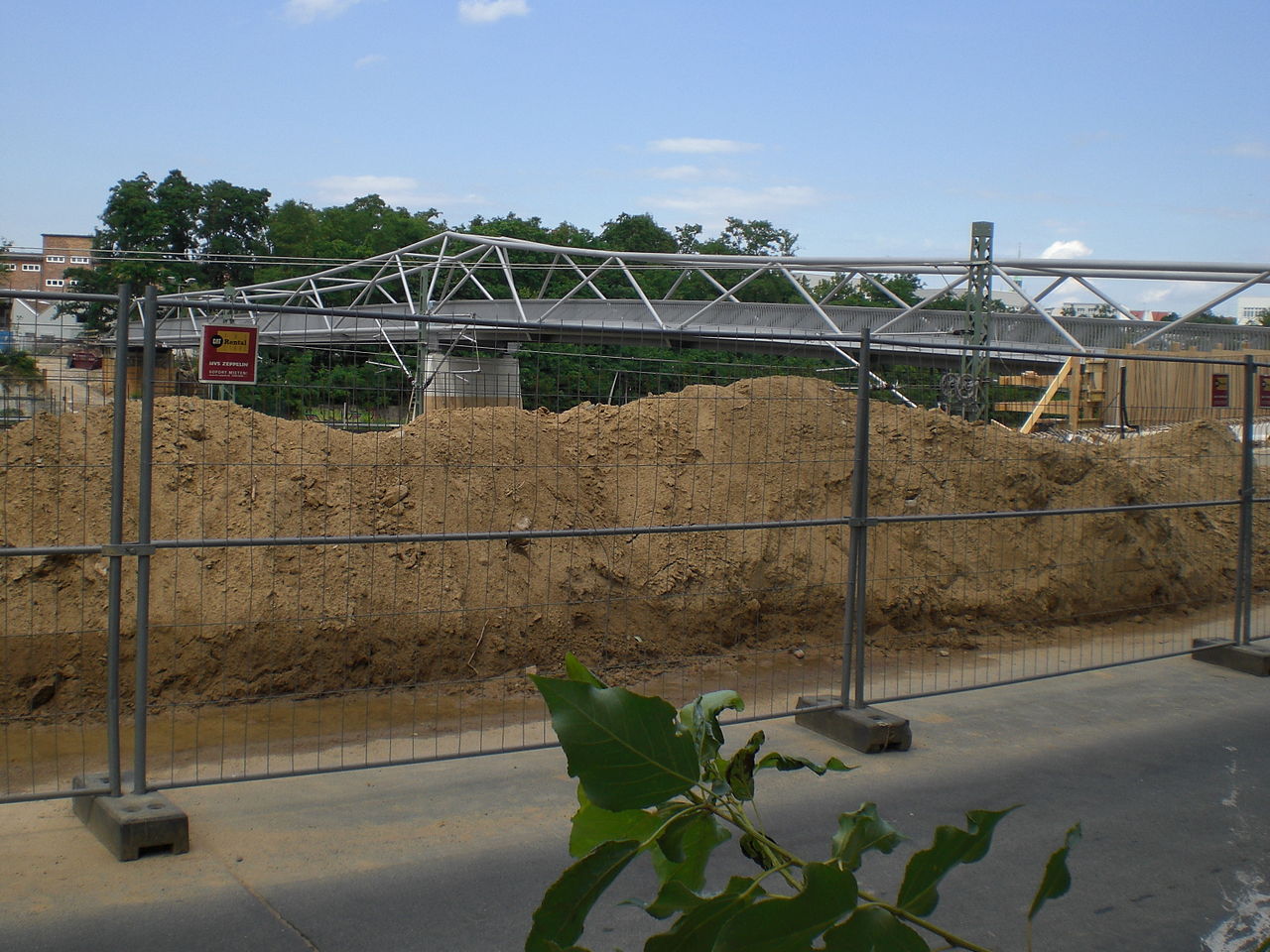
What Is Temporary Fence?
Temporary fence, also sometimes called event fencing, construction fencing, rental fence or temp fence, usually means free-standing fence panels that are installed using special feet or bases, some kind of clips, and occasional bracing.
Let’s take a closer look at how temporary fence is made and installed, what it might cost, and the pros and cons of this kind of fencing.
How Is Temporary Fence Made?
The first thing you need to know when investigating what is temporary fence is how it’s made.
Most temporary fence systems are made with tubular outer frames, one or two vertical braces, and mesh covering that could be either welded mesh or chain link.
Some temporary fence panels are simply galvanized steel, but many are also PVC or powder coated – often in high visibility colors, so they’re easy to spot on construction sites or at events.
How Are Temporary Fences Installed?
Temporary fences usually have some kind of connector that allows you to effectively link the panels together. This could be a clip or a clamp, or even a hook and eye system on adjacent panels.
They usually have bases or foot pieces that can be made out of concrete, steel or something else and that usually have spaces for the bottom of two adjacent panels. This means that between the clips or clamps and bases, your temporary fence is secured at the top and the bottom.
While foot pieces and bases might be enough to keep your temporary fence standing, it might also need bracing. This is usually done by installing a panel at 90 degrees to the fence line, but there are other ways this might be achieved.
What Are the Pros and Cons of Temporary Fence Systems?
Temporary fence or rental fence systems, like any other kind of fence, have both pros and cons.
Pros of Temporary Fence
Let’s start with the good things:
- Temporary fence is quick to install
- It can be moved around, so you can secure different areas easily
- There’s no digging required to install temporary rental fence systems
- Fence rental is usually charged per month, so you only pay as long as you need the fence
- There are no worries about fence maintenance
Cons of Temporary Fence
Of course, there’s always a downside too!
- Temporary fence might not be as secure as some other options
- Temporary fence panels have been stolen from sites in some cases
- During the high season (usually summer, when construction projects are in full swing), it can be hard to source rental fence
Temporary Fence Customizations
Most rental fence companies offer a set “menu” of fence options, usually in different heights and sometimes in slightly different designs for different uses.
However, there are also some other customizations that you might be able to find.
One of these is detachable spikes that can be added to the top of your temporary fence panel for added security. Another is a special footplate that allows for the installation of temporary fence on top of jersey barriers or similar concrete block structures.
Some companies also have special gates for their temporary fence systems.
If you’re looking for something specific, talk to several different temporary fence companies in your area, and find out what your options are.
How Is Temporary Fence Billed?
Most temporary rental fences are billed monthly, usually per linear foot of fencing on your site.
So this means that if you need 125 feet of temporary fence and the panels are 10 feet wide, you would be charged for 130 linear feet of fence since there’s no half-panel option.
Many temporary rental fence companies also charge delivery fees, set-up fees, fees to move your fence and take-down fees. Be sure to find out exactly what you can expect to pay when you get a quote because this can differ from one company to the next.


